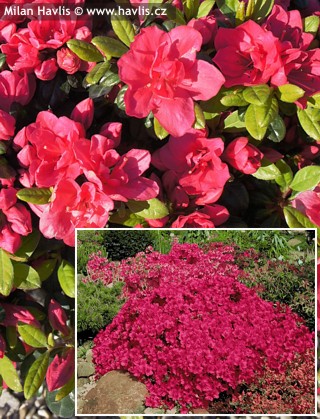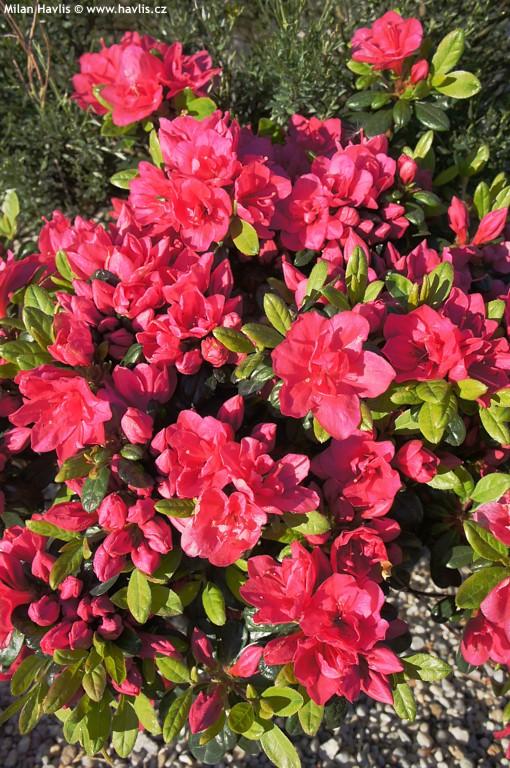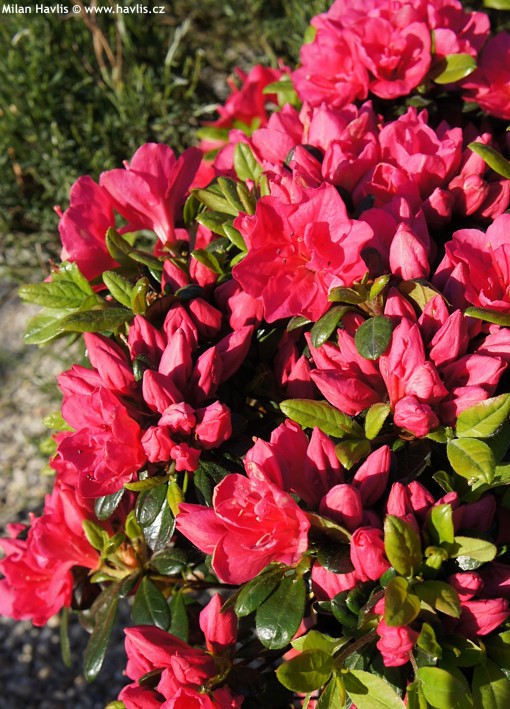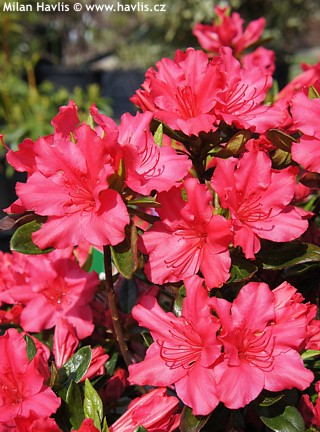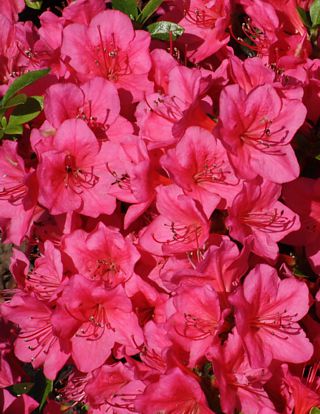Azalea japonica 'CANZONETTA' Japanese azalea
size/type
low or groundcovering,low or groundcovering
usual height
0,3-0,5m
usual width
0,6-1,3m
leaves
evergreen broadleaf
colour of leaves
flowers
showy
colour of flowers
blooming time
May-May
location
full to partial sun
USDA zone (lowest)
7 (down to -23°C)
winter protection
for zone 5+6

for zone 7

categorized
Azalea
Japanese azaleas are very popular features of our gardens. In their home climate they grow to relatively substantial shrubs, as opposed to limited sizes in our continental, dry climate. They are very floriferous, maintenance-free shrubs that usually bloom from mid to late spring.Description of the plant:
Canzonetta is a Japanese azalea bred by Hans Hachmann in 1987, and is still among the most popular varieties until today. The reasons are rich colour, compact shape, and reliable evergreen foliage. Canzonetta bears medium-large double flowers of rich magenta red colour. Leaves are small, broadly elliptic to almost rounded, very glossy, rich green in summer and changing to deep purple or bronze in winter. The plant makes a compact cushion or a ground cover, growing only about 30 cm tall but 70-80 cm wide in 10 years. Very reliable variety. In well-drained but constantly moist soil you can grow it in full, too, otherwise in partial shade. Japanese azaleas can be clipped to shapes in early June. If so, do not use fertilizers enhancing growth rate. The size of new branches would get out hand and spoil the shape you are going to achieve. They need light, permeable soil that is acid, constantly moist (keep azaleas mulched at all times) and moderately fertile. Use fertilizers for rhododendrons and azaleas, or ericaceous plants. The best soil mix is 1/3 of peat, 1/3 of leaf-mould or lime-free compost, and 1/3 of soil from the hole where you are going to plant it. Azaleas have shallow roots, so do not plant not too deep. This variety proved hardy to -24°C° (USDA zone 6) but will probably take lower temperatures.
Last update 16-02-2013
QUICK PRICE OVERVIEW
CURRENTLY SOLD OUT
WANT TO TRY A SIMILAR PLANT?












